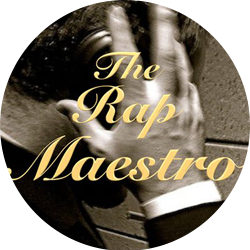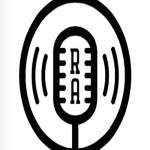Sweatshirt Analysis in the Rapper’s Flow Encyclopedia. A guy asked me some very good questions about my original
Sweatshirt analysis, and I answered them all for him. I’ve indicated his
questions in a different font than my own answers. As always, thanks so much
for your support.
has little to no education in theory; do you think that he meant to rap in 9 or
is it just how he said it that day?
I first started analyzing rap: do these artists MEAN to do what they do? And,
like a lot of questions, it hinges on what you really mean when you say
“mean.” Earl didn’t purposefully rap in noctuplets; however, this
doesn’t mean what he did happened by accident, and it DOESN’T mean that the
artistic value of his work is any less because of it. This demonstration would
be a lot easier if we were in person, but rappers don’t think of musical time
like most other music-makers do. For instance, as a composer, I look at a piece
of music, and see a bar of music that can be divided into 4 beats, each of
which can be divided into 4 16th notes, all of which can be even further
subdivided, and so on. Think of musical time like a piece of clay. For most
music-writers, musical time works like a piece of clay that is laid out and
evenly divided into even parts. But for rappers, they don’t experience musical
time that way. For them, musical time is like clay that, while being laid out
horizontally, is pulled apart and pushed together. Sometimes it’s thin,
sometimes it’s thick. They don’t work from the musical beat up; they work from
the verbal syllable down. This is what allows them to come up with their crazy
rhythms. I mean, really, noctuplets? NOCTUPLETS?!?!?! A composer would never
even compose in noctuplets, because they’re literally unperformable. They just
have too many variations, a performer would never have them all
memorized.
Question: Have you heard other versions of him doing this and, if so, are they
the same?
youtube different live versions of the song. The first was this one http://www.youtube.com/watch?v=Gj96SqkGJ_c I don’t think Earl is even at the show; you’ll notice that odd
future is just playing the CD track and having the crowd rap along.
during all these shows that they performed it without him.
rapping “earl” http://www.youtube.com/watch?v=LhzOrllHLrk
is rapping it very differently at times. His rhythms aren’t the same, they’re
not as complex (more straight 16ths I think), and not as intricate. I think
part of this has to do with the complexity of re-creating a studio experience
live, but it also has to do with the complexity of Earl’s rhythms in the first
place. Before I even saw any of these vids, I would have told you, “No,
Earl doesn’t rap it the same way every time live, it’s simply too
difficult.” These videos give that claim credence.
Question: How much do his 64th note noctuplets lend to his style?
rhythms are closely tied to his style. This comes out on his new album
“Doris.” Earl definitely has a signature flow, something not all
rappers do. It’s low, laidback, not hype, monotone delivery, like MF DOOM, but
structurally tighter. These noctuplets support that. I haven’t analyzed it
properly yet so those examples might be a little scattershot, but he also raps
in noctuplets on “Whoa,” a song which you could pretty much just call
“Earl Pt. 2”, it’s so similar to the first song.
Question: Would his rap be terribly different if he just skipped down beats and
rapped with less syncopation?
beyond syncopation. In my analysis I touch on it a little, but I think Earl’s
rhythms are so fine that they give the sensation that the beat of the music has
moved. I’m still working this theory out though, so I can’t say much more about
it.
Question: What do you think rappers like Andre 3k, MF Doom and Earl think of
when rapping their rhythms; do they just “go” or is there a sense of
“Imma need ta make dis spit flow as fuck” in regards to their
rhythms?
answer. I think what you’re really asking is how rappers come up with their
rhythms. In response, I’ll quote you some relevant tidbits from my interviews
with Jean Grae and Talib Kweli:
start with words or music?
Jean Grae: I don’t think that they’re different. I don’t separate the rhythm
from the actual word. The word is exactly what is creating the timing…I guess I
look at them as beats and notes in themselves. So I’m very conscious of what
sort of patterns feel right…and you know it’s the best rhyme when you’re
fucking the beat. You’re not competing, you’re not lying somewhere there,
you’re getting in there, finding all the spaces where you’re supposed to be.
It’s choosing the right words…the first idea, the one I always have and that
takes the most time, is the opening line. And it all grows from there…
Composer’s Corner: So does the word suggest a rhythm?
Jean Grae: Again, it doesn’t suggest, it is the rhythm. It suggests an emotion,
whether you’re using triplets or whatever it is, I think certain patterns and
certain syllables convey emotions, and that’s really my goal at the end of it.
It’s not only using the right word, it’s selecting a word and usually one I
haven’t used, words that draw emotions out of people. Words that are relatable
are the most important things.
Composer’s Corner: Is rap more poetry, melody, or is it when you combine both
together?
Talib Kweli: It’s all of that. It’s definitely when you combine all of that
together. There are rappers who I love, that I’m scared of, like, “Damn, that
motherfucker can flow. Damn, he can rap.” But they’ve never made a song I like.
I wouldn’t go as far to name them.
Composer’s Corner: You’re saying that it never came together, the flow working
well with the beat?
Talib Kweli: Yeah. You hear somebody and you recognize the talent, and you’re
like, “Wow, that person can really rap. Wow, if they could just figure out what
beat to flow on and how to make a song, it would be dope.” I’m aware enough of
myself as an artist to know that there’s people who feel that way about me.
There’s people who feel like “Get By” is my only good song, and I don’t pick
good beats. I would beg to differ. But there’s people who feel like that, and
there’s people who feel like that about me as well.
Composer’s Corner: So does every rapper have their own unique flow? And the
question is how to make it fit to a certain beat and how to express yourself in
a way that makes sense?
Talib Kweli: I’m saying that’s how it should be, and that’s what the best
rappers do. There are flows that get popular. There was a Jadakiss flow that
got popular. You know whose flow has gotten extremely popular lately? Chief
Keef. The whole industry started rapping like that. There’s certain flows that
get popular and people run with them. Definitely, Das EFX had one of the more
popular flows.
—–
Back to my voice now:
The takeaway for you from this should be that each rapper chooses rhythms that
they feel fits the beat. These rhythms can’t be concocted out of some formula;
they’re simply felt by the rapper. However, the rhythms that work for one
rapper wouldn’t necessarily work for the next. The rappers don’t purposefully
choose noctuplets, or quintuplets or whatever; they choose syllables and words
for the emotional effect that they convey to a listener.
Thanks! Please keep spreading my articles around, it really helps.


 Join the weekly RapAnalysis newsletter at
Join the weekly RapAnalysis newsletter at
I was wondering, what are your thoughts on "I Don't LIke Shit, I don't Go Outside"?
Does earl keep delivering interesting and well crafted flows and rhythms?
Hey man, thanks a lot for writing. I actually have alot to say on that topic — too much to fit here, there's a character limit. Could you email me at [email protected] so I can give them to you? Thanks man!
Peace,
Martin